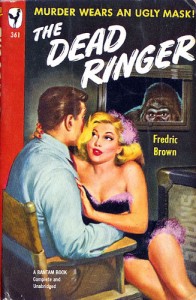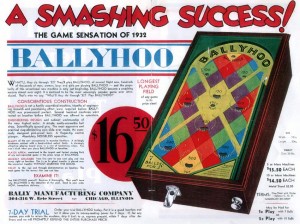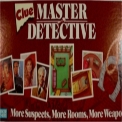Friday, August 14: Bandersnatches
DEAD RINGERS AND HUMDINGERS
by Steve Steinbock
This week Rob wrote a wonderful piece on pastiches in which he referred to Dave Zeltserman’s “Julius Katz,” which is the lead story in the newest issue (Sept./Oct. 2009) of Ellery Queen’s Mystery Magazine. I had hoped to devote today’s column to reviewing that issue. It’s a humdinger, double-sized, with a whopping sixteen stories and one poem.
Alas, being on the road, I don’t have access to my regular subscriber’s copy of the magazine, and only this week was able to track down a copy in a book store. But once I’ve had a chance to read more than a few stories, I’ll feel better about giving it a review. So grab yourself a copy if you don’t have one already, and be back here in seven to compare notes.
 Meanwhile, I did just finish reading Fredric Brown’s 1948 mystery novel, The Dead Ringer, and it has inspired a few thoughts I’d like to share. Fredric Brown (1906-1972) is a favorite of mine. With around 250 published short stories, he fits squarely in our Brief community. His novels and short stories included light horror, science fiction, and crime. “Knock” is a brilliant science fiction story, and contains a story within a story that is perhaps the shortest and most suspenseful short story ever written (two sentences long with only seventeen words). “Arena” is another popular science fiction story that was adapted as an episode in the original “Star Trek” series.
Meanwhile, I did just finish reading Fredric Brown’s 1948 mystery novel, The Dead Ringer, and it has inspired a few thoughts I’d like to share. Fredric Brown (1906-1972) is a favorite of mine. With around 250 published short stories, he fits squarely in our Brief community. His novels and short stories included light horror, science fiction, and crime. “Knock” is a brilliant science fiction story, and contains a story within a story that is perhaps the shortest and most suspenseful short story ever written (two sentences long with only seventeen words). “Arena” is another popular science fiction story that was adapted as an episode in the original “Star Trek” series.
Fredric Brown is also the author of what might be my all-time favorite mystery novel, Night of the Jabberwock, which in part inspired the title of my weekly blog-column.
The Dead Ringer was Brown’s second published novel, and the second (after 1948 Best First Edgar winner The Fabulous Clipjoint) to feature Ed Hunter and his Uncle Ambrose. The book is set in and about a traveling carnival where Ed and Uncle Am are working a ball-toss booth. The first murder (of three) is typical of Brown’s sense of the bizarre: a naked midget is found stabbed in the side-show tent. A midget that nobody in the carnival knew.
There is one beautiful passage in the book that describes carnival life. At least the romantic side. Ed shares this insight with Rita, the beautiful stripper who is the object of his desire:
Ever hear a great violinist, Rita, and think what he’s doing? – scraping the hair of horse’s tail across the dried guts of sheep. . . . A carney. . . is a lot like a violin. It’s made up of things as unromantic as horse’s hair and sheep’s guts, . . it’s pitched to appeal to the nasty instincts of the public, the lust and morbid curiosity and avariciousness – but it adds up to magic, too. There’s something there that’s more than neon and gambling wheels and human flesh and misshapen freakishness and – hell, I can’t explain it, but it’s there.
I love that passage.
Reading The Dead Ringer also brought out my love and interest in words. The book is filled with carnival jargon, most of which I was able to figure out, but some of which had me baffled. The “G-Top” for instance, was the tent where the carney’s went to play cards after the carnival shut down. The “midway” is the passage or path – usually “U” shaped – through which visitors pass and in which the barkers sell their amusements.
But one term had me baffled: Bally. I knew of two definitions: the British euphemistic substitute for “bloody” (often used by Bertie Wooster and other Wodehouse characters), and the pinball/casino/health club corporation.
I did some digging, and learned that in Carney-lingo, bally is short for “ballyhoo” and refers to the promotional spiel used to lure people into a sideshow. According to the Carny Lingo – the Ultimate Guide, the word is a corruption of the Arabic expression “D’Allah hun” (“Oh, for God’s sake!”) said by the tired Arab musicians when they were instructed to perform.
As word-origins go, I find this one dubious, but it makes for a good story.
 Ballyhoo is also a nautical term for an inferior vessel. We’ll let our resident Navy veteran and philologist have a go at this.
Ballyhoo is also a nautical term for an inferior vessel. We’ll let our resident Navy veteran and philologist have a go at this.
Incidentally, Bally Health Clubs and the Bally pinball and slot machine manufacturer got their name from a popular 1930s pinball game called “Ballyhoo.”




















Don’t forget the Irish, Steve. In Ireland bally means town or homeplace. My great-grandfather came over from the town of Ballyjamesduff. However, if you are walking down the street in Ballyjamesduff and ask for bally you will be handed a bag of marijuana.
My favorite Fredric Brown novel is “Compliments of a Fiend” in which the “Ambrose Collector” gives Ed Hunter some bad moments. I can’t recall the details but I remember William Campbell Gault saying he and Brown were boyhood friends.
Ballyhoo is also a nautical term for an inferior vessel. We’ll let our resident Navy veteran and philologist have a go at this.
I have never heard this expression before, perhaps because unlike the carny term, it is British rather than American. But I did do the research requested.
The full nautical term is ballyhoo of blazes, and it predates the carnival barker’s tout speech — the OED lists them as separate words, tracing the nautical usage to as early as 1836, but the carny term only to the early 20th century. Eric Partridge dates the nautical term to ca. 1880 and notes its use by Rudyard Kipling (who spelled it “bally-hoo”) in Captains Courageous (1897). Both the OED and Partridge trace it to ballahou, a type of schooner common in the West Indies in the 19th century. The OED further traces that to the Spanish balahú, “schooner”.
Partridge traces the carnival term to ca. 1913 and says it’s an abbreviated form of ballyhooly, a word for copy-writers’ or politicians’ exaggeration dating from ca. 1910. Partridge is clearly wrong about the sequence, though, since the OED provides the following (racially offensive) example of “ballyhoo” from 1901:
“First there is the ballyhoo—any sort of a performance outside the show, from the coon songs of the pickaninnies in front of the Old Plantation, to the tinkling tamborines of the dancers on the stage of ‘Around the World’.”
Partridge points out that “ballyhooly” was also used in WWI army slang, “a trip to Ballyhooly”, more frequently “Balloo”, meaning a pleasure trip. “Balloo” is a corruption of Bailleul, a picture-postcard town in French Flanders northeast of Lille, so “Ballyhooly” here uses “bally-” in its Irish sense. Thackeray also had some fun with the Irish construction and made the obvious pun with “bally” = “bloody” in Fraser’s Magazine in 1847:
“Ha! What have we here? M. A. Titmarsh’s Christmas-Book—Mrs. Perkins’s Ball. Dedicated to the Mulligan of Ballymulligan. Ballymulligan! Ballyfiddlestick!”
The OED does not list the Arabic etymology, which strikes me as unlikely.
Just as I surmised. Many of the explanations of the origins of “ballyhoo” are a bunch of bally-hooey.
I haven’t read The Dead Ringer, but I too am a fan of Brown’s writing. Very clever, both in novels such as The Screaming Mimi and short stories like Don’t Look Behind You.
Count me in, too, as one of Brown’s devoted fans. Novels and short stories as well.
Good a place as any to mention the fine NESFA Press and their 2000 collection of Brown’s complete Science-Fiction “From These Ashes.” It includes some mysteries and stories that blurr the lines between genres. (I loooooove “Nightmare In Yellow.”) The collection “Homicide Sanitarium” collected some of Brown’s stories from the detective pulps. (1984, Dennis McMillan Publications)This includes the wonky locked-room mystery cum horror story “The Spherical Ghoul.”
I’ll close with this, of my own devising:
“Knock-knock!”
“Who’s there?”
“Fredric Brown”
Silence….
“Bally-hoo of blazes” appears in chapter 76 of Melville’s OMOO, published 1850. The context is nautical. An American writer but an Irish sailor speaking. The version I have splits the line after bally so I don’t know if the hyphen is intended or not.
Not as old as James’ finds, alas. Maybe I’ll tell you how I found it.
Melville’s use is one of those listed in the OED.
Would anyone out there cxare to see an
‘index’ for Fredric Brown along with scans of the original magazine covers where his stories appeared? No charge.
available at paccassi@candw.lc